
Black mold in your water bottle is a common problem, especially if it’s been sitting unused for a while or hasn’t been cleaned regularly. It’s unsightly, and it can be a health concern1 if left untreated. Luckily, it’s not too difficult to remove, and in most cases, your bottle can be saved with a few simple steps.
Removing black mold from your water bottle is important for both cleanliness and health reasons. With the right cleaning techniques, you can make your bottle safe to use again.
Let’s dive into how to deal with black mold and ensure your water bottle is in tip-top shape for the next use.
Can You Clean Black Mold Out of a Water Bottle?
Yes, black mold can usually be cleaned out of a water bottle, but it requires some care. Depending on the extent of the mold growth, you’ll need to take different steps to ensure it’s completely removed.
Cleaning black mold from a water bottle is possible with the right cleaning agents and methods2, so don’t throw it out just yet.
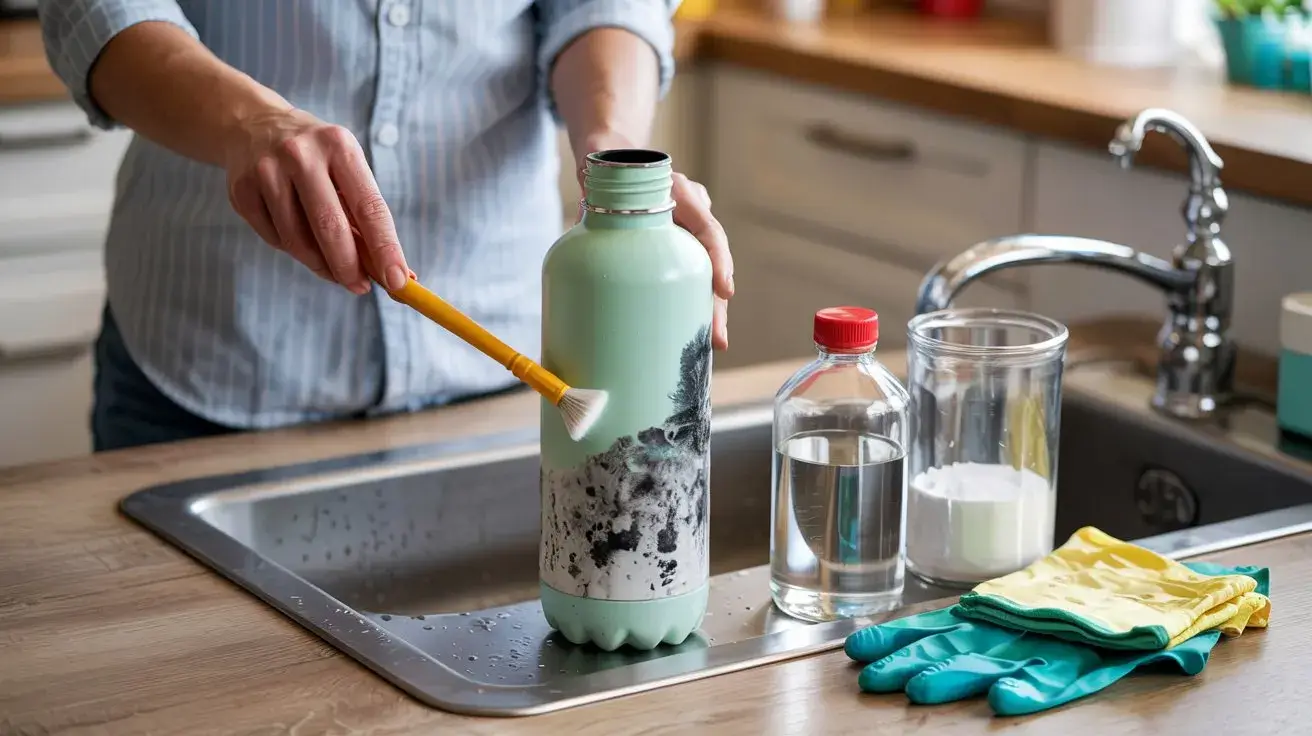
Step-by-Step Guide to Clean Black Mold
- Empty the Bottle: Start by pouring out any remaining liquid in the bottle.
- Wash with Warm Water: Fill the bottle with warm water and rinse it out to remove loose mold.
- Use Cleaning Agents: Mix water with either vinegar3 or baking soda4 to create a cleaning solution.
- Scrub with a Bottle Brush: Use a long bottle brush5 to scrub the inside, especially around the neck and the bottom.
- Soak: Let the bottle sit for about 10-15 minutes to loosen any remaining mold.
- Rinse Thoroughly: Rinse the bottle thoroughly with clean water. Repeat the process if necessary.
Common Cleaning Solutions for Mold
- Vinegar: Natural, safe, and effective for killing mold.
- Baking Soda: Great for removing stubborn stains and odors.
- Hydrogen Peroxide6: Another powerful mold remover.
How to Get Black Stuff Off a Water Bottle Seal?
The seal or lid of a water bottle can sometimes hold onto black mold, making it tricky to clean. If not dealt with, it can lead to a lingering smell or even further mold growth.
You can clean the black mold from the bottle seal with a few easy steps using common household cleaning products7.
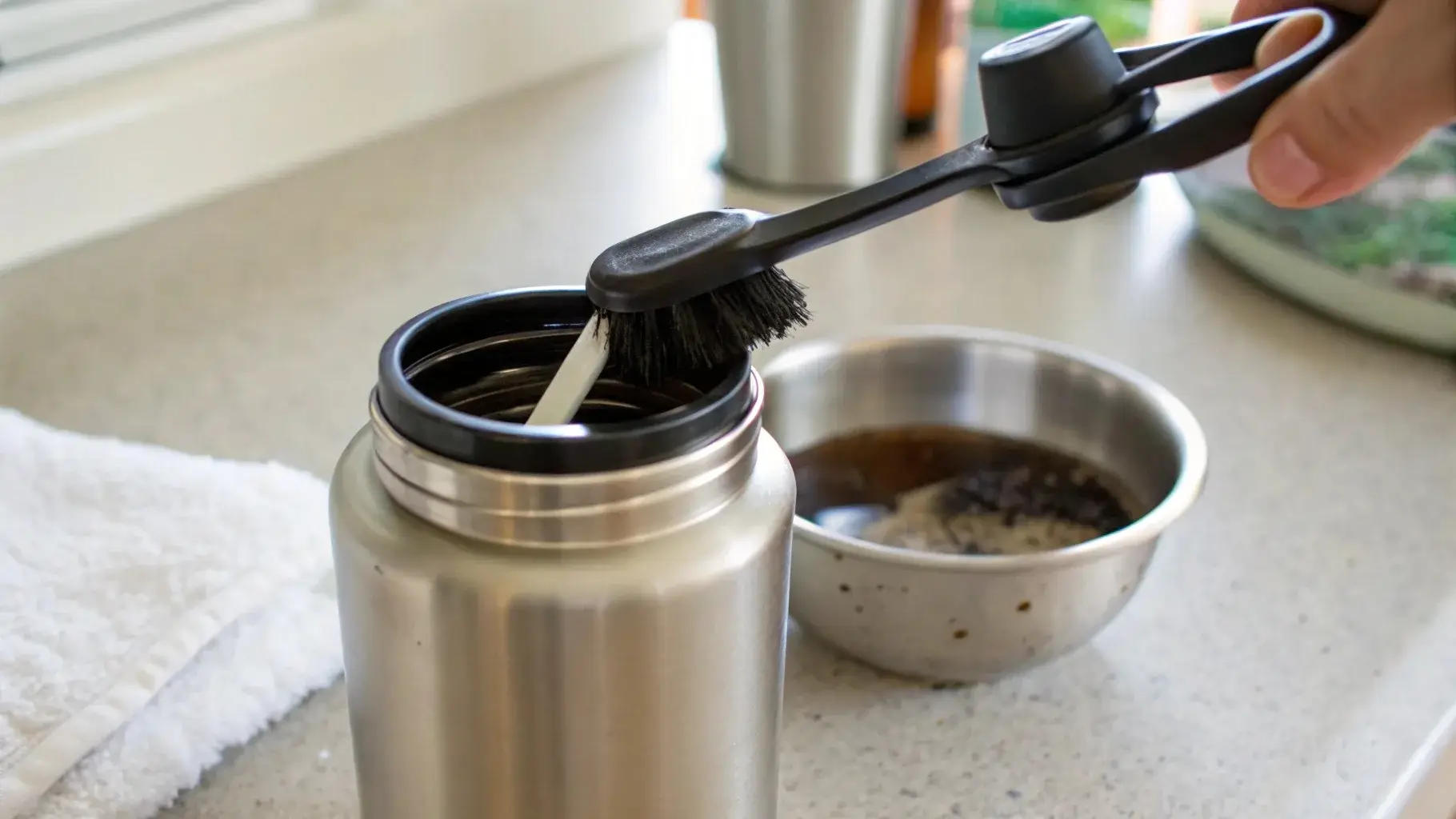
Steps to Clean the Seal
- Remove the Seal: If possible, take the seal out of the lid for a more thorough cleaning.
- Scrub the Seal: Use a cloth or small brush dipped in vinegar, baking soda paste, or hydrogen peroxide to scrub the black mold off.
- Soak: Soak the seal in a solution of hot water and vinegar for 10-15 minutes.
- Dry Completely: Be sure the seal is completely dry before reattaching it to the bottle.
Is Black Mold from Water Damage Toxic?
Yes, black mold can be toxic8, particularly if you ingest it or inhale the spores. While a small amount of mold in a water bottle is not immediately life-threatening, it can cause health problems such as allergic reactions, respiratory issues, or even infections in sensitive individuals.
It’s essential to address any mold in your water bottle immediately, as it can potentially lead to health issues if consumed over time.

Health Risks of Black Mold
- Respiratory Problems: Mold can trigger asthma, allergies, or sinus issues.
- Gastrointestinal Issues: Ingesting moldy water can cause nausea, vomiting, or stomach discomfort.
- Immune System Response: Prolonged exposure to mold can weaken the immune system, particularly for those with compromised health.
When Mold Becomes Dangerous
If you’ve noticed mold growing frequently in your water bottle, it might be time to reassess how you clean it and whether it’s being left in damp conditions too often.
Should I Throw Away My Water Bottle If It Has Mold?
It’s often tempting to throw out a moldy bottle, but in most cases, it’s not necessary. If the bottle is in otherwise good condition, a thorough cleaning9 can make it safe again.
Throwing away your water bottle is a last resort—try cleaning it first before deciding to discard it.
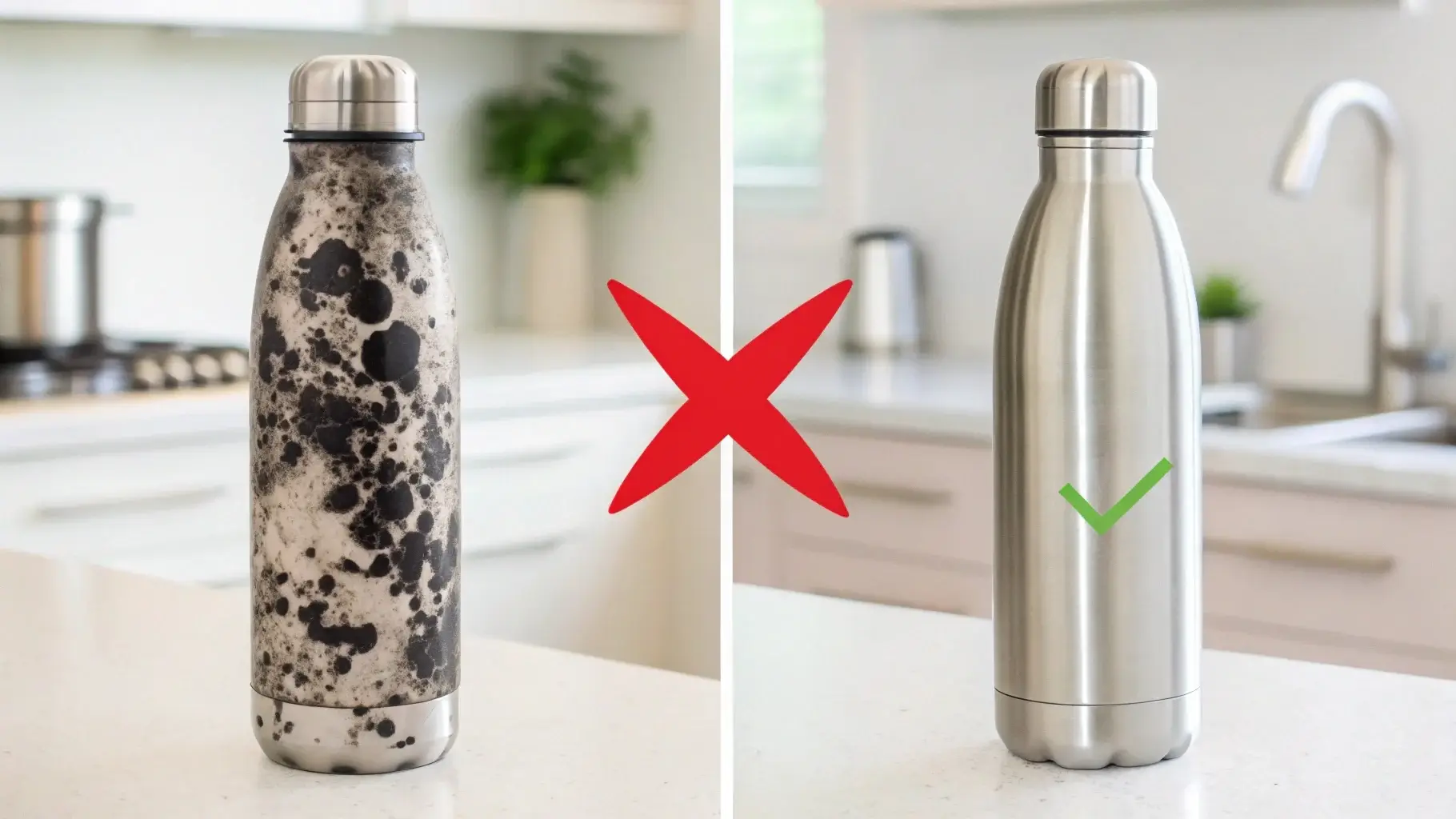
When to Throw the Bottle Away
You should consider replacing your water bottle if:
- The Mold is Extensive: If mold is deeply embedded in hard-to-reach areas like the base or neck and it keeps coming back, the bottle may be beyond saving.
- The Material is Damaged: If the mold has caused significant wear and tear on the bottle, it may no longer be effective for use.
- Persistent Smell or Taste: If, after cleaning, the mold smell or taste lingers, it’s probably time for a new bottle.
How Do You Remove Black Mold from Water?
Removing mold from water itself can be tricky. If you suspect that the water in your bottle is contaminated with mold spores, it’s best to discard the water10 and thoroughly clean both the bottle and lid.
Mold in water can spread quickly, so regular cleaning of your bottle is important to prevent contamination.
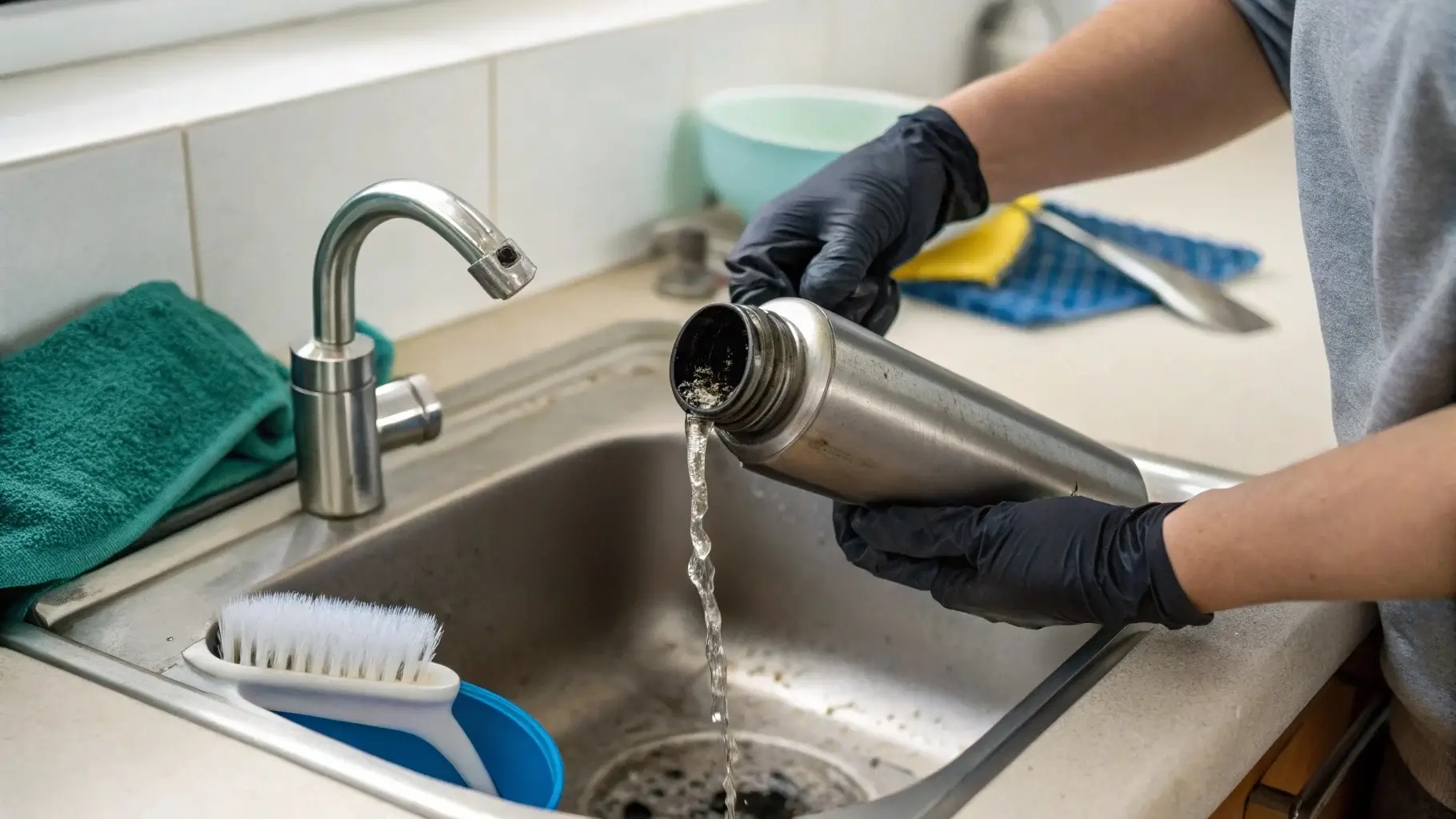
Tips for Mold-Free Water
- Regular Cleaning: Clean your bottle regularly, especially if you use it for more than just water.
- Use Fresh Water: Don’t let water sit for days in your bottle. Always refill with fresh water to prevent mold growth.
- Storage: Store your bottle in a cool, dry place when not in use to prevent mold buildup.
What Is the Black Stain in My Water Bottle?
The black stain in your water bottle is most likely mold or mildew11. These stains can develop if the bottle has been left closed with moisture inside for an extended period, or if it hasn’t been cleaned properly.
Black stains are a sign that mold has begun to grow in your bottle, and they should be cleaned immediately to avoid further contamination.
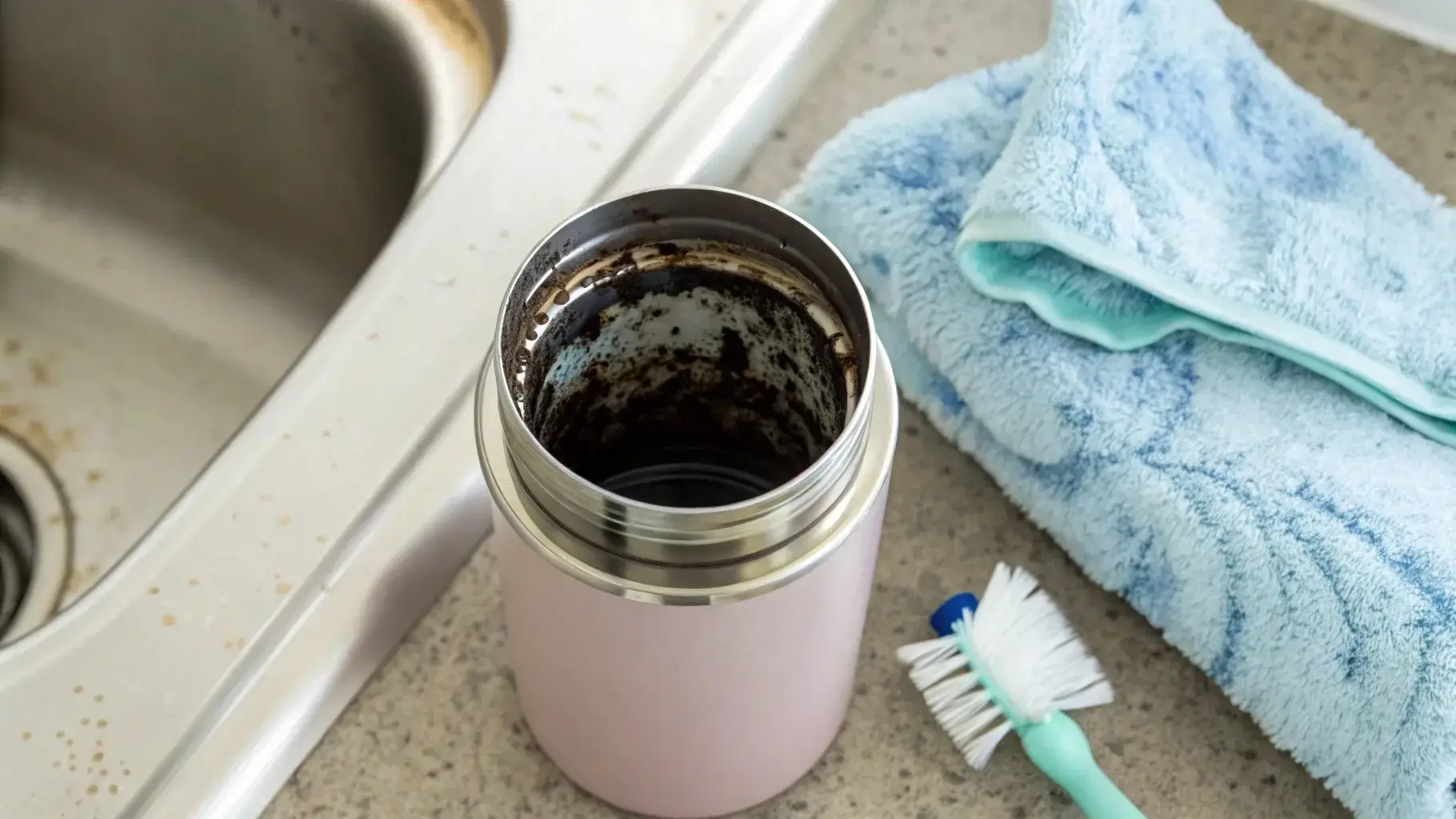
Preventing Black Stains
- Regular Maintenance: Clean your bottle after each use to prevent any buildup.
- Avoid Sealing Wet Bottles: Don’t close a bottle that’s still wet or damp; let it dry completely.
- Use a Silicone Brush12: A silicone brush or bottle brush helps scrub hard-to-reach spots, preventing stains from forming.
Conclusion
Black mold in a water bottle is not something to ignore. While it can be safely removed with proper cleaning, neglecting to do so can lead to health risks. Regularly cleaning your water bottle, especially around the lid and seal, and avoiding storing wet bottles for extended periods are key to keeping your bottle mold-free. If the mold is persistent, it might be time to replace your bottle for safety and hygiene purposes.
-
Learn how mold exposure from water bottles can affect your health ↩
-
See recommended methods and products to clean mold safely ↩
-
Why vinegar is a natural mold-killing solution ↩
-
How baking soda removes stains and neutralizes odors ↩
-
Explore top-rated bottle brushes for thorough interior cleaning ↩
-
Discover how hydrogen peroxide works to disinfect and eliminate mold ↩
-
Household cleaning solutions that are effective against mold ↩
-
Health risks associated with toxic black mold exposure ↩
-
Step-by-step cleaning methods to salvage moldy bottles ↩
-
Why you should never drink mold-contaminated water ↩
-
Identify black stains and differentiate between mold and other residues ↩
-
Best silicone brushes for water bottles and narrow openings ↩

